Recent Fire Damage Posts
Handle with Care: The Dangers of DIY Fire Restoration
11/16/2023 (Permalink)
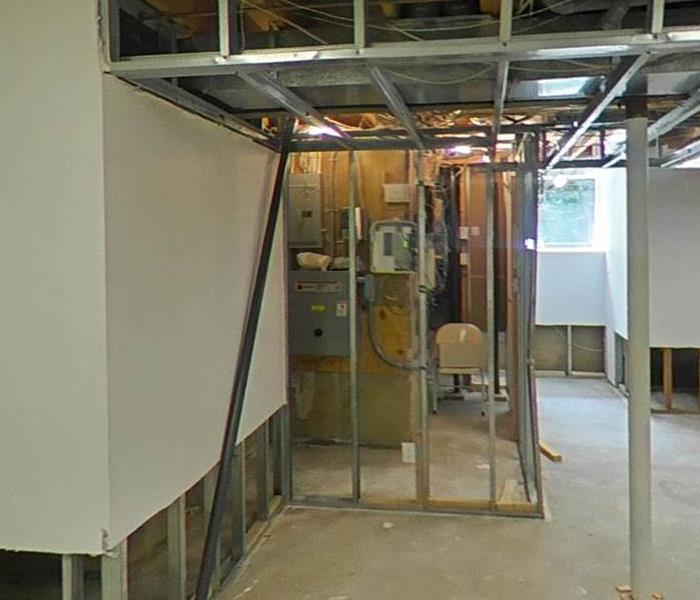 Entrust the process to the experts for your fire restoration emergency.
Entrust the process to the experts for your fire restoration emergency.
Experiencing a fire in your home or business is a devastating event that requires immediate action for restoration. While the idea of handling fire restoration on your own may seem appealing, it is important to recognize the potential dangers that accompany the do-it-yourself (DIY) approach. In this blog, we will shed light on the risks associated with DIY fire restoration and emphasize the importance of hiring professionals to ensure a safe and effective restoration process.
Safety Hazards
Fire damage restoration involves various hazards, including compromised structural integrity, electrical issues, and potential exposure to harmful substances such as smoke residue, soot, and asbestos. Professionals trained in fire restoration understand the proper safety protocols, have the necessary protective equipment, and know how to navigate hazardous situations. DIY attempts without proper knowledge and precautions can put you at risk of injury or long-term health issues.
Inadequate Assessment
Accurately assessing the extent of fire damage is crucial for an effective restoration plan. Professionals are experienced in identifying hidden damage, such as compromised wiring, water damage, or structural issues, which may not be apparent to an untrained eye. Failing to identify and address these underlying issues properly can lead to further damage or even recurring problems down the line.
Improper Cleaning Techniques
Fire damage restoration involves specialized cleaning techniques to remove soot, smoke residue, and other contaminants from various surfaces. Using incorrect cleaning methods or products can result in permanent damage to your belongings or property. Professionals have the expertise and knowledge to determine the appropriate cleaning techniques for specific materials and surfaces, ensuring effective restoration without causing additional harm.
Limited Equipment and Resources
DIY fire restoration often lacks access to the necessary tools and equipment required for a thorough and efficient restoration process. From industrial-grade cleaning solutions and specialized drying equipment to protective gear and odor removal systems, professionals utilize advanced resources to ensure comprehensive restoration. Without these resources, DIY attempts may fall short, leading to incomplete restoration and potential health hazards.
Timeliness and Efficiency
Prompt action is crucial after a fire to mitigate further damage and prevent mold growth, structural deterioration, and secondary water damage. Professionals are equipped to provide timely and efficient restoration services, utilizing their experience and streamlined processes to expedite the restoration process. DIY attempts may lack the efficiency required to address the full extent of fire damage within the necessary timeframe.
Insurance Claims
Dealing with insurance companies can be complex, especially during a fire restoration process. Professionals experienced in fire restoration often have established relationships with insurance companies and can assist with documenting the damage, providing evidence, and navigating the claims process. Their expertise can help ensure you receive the rightful compensation and support from your insurance provider.
In conclusion, the dangers of DIY fire restoration should not be underestimated. The risks to personal safety, potential for further damage, and lack of specialized equipment and expertise make it imperative to hire professionals for fire damage restoration. By entrusting the restoration process to experts, you can ensure a safe, effective, and efficient restoration journey, allowing you to recover and rebuild with peace of mind.
Flames and Finances: How Commercial Property Insurance Shields Your Business from Fire Damage
8/14/2023 (Permalink)
 Commercial property insurance is an indispensable tool for shielding your business from the devastating effects of fire damage.
Commercial property insurance is an indispensable tool for shielding your business from the devastating effects of fire damage.
A fire can pose a severe threat to any business, causing significant financial losses and disruption to operations. As a responsible property owner, it's essential to protect your business from such unforeseen disasters. Commercial property insurance serves as a safeguard against fire damage, ensuring your business can recover and rebuild in the aftermath of a fire. In this article, we will explore how commercial property insurance shields your business from fire damage and the critical role it plays in preserving your financial well-being.
Understanding Commercial Property Insurance
Commercial property insurance is a vital form of coverage designed to protect businesses from various risks, including fire damage. This policy typically covers the physical assets of your business, such as the building, equipment, inventory, furniture, and fixtures, against damage or loss due to fire and other covered perils.
Fire Damage Coverage under Commercial Property Insurance
In the event of a fire, your commercial property insurance will kick in to cover the repair, replacement, or rebuilding costs for the damaged or destroyed property. This can include structural repairs, smoke damage cleanup, replacing damaged equipment, and restocking inventory. Having this coverage helps mitigate the financial burden of rebuilding and ensures your business can recover swiftly.
Business Interruption Coverage
In addition to covering the physical damage, commercial property insurance often includes business interruption coverage. This aspect of the policy provides financial assistance to help your business continue operating, even if it temporarily cannot due to fire damage. It can compensate for lost income, ongoing expenses, and even additional expenses incurred to maintain operations during the recovery period.
Protecting Your Financial Investment
For most businesses, the property represents a substantial financial investment. Without adequate insurance coverage, a fire could lead to devastating financial losses that could jeopardize the very existence of the business. Commercial property insurance acts as a safety net, allowing you to protect the capital you've invested in your business and providing peace of mind that your financial future is secure.
Ensuring Business Resilience
Fire damage can lead to business disruptions, revenue losses, and potential liability issues. By investing in commercial property insurance, you create a foundation for business resilience. With proper coverage, you can focus on rebuilding and getting back to normal operations without worrying about the crippling financial impact of fire damage.
Navigating the Insurance Process
After a fire incident, dealing with insurance claims can be complex and time-consuming. It's crucial to document the damage thoroughly, provide accurate records, and work with your insurance provider to ensure a smooth claims process. Having commercial property insurance simplifies this process, as your insurance company will guide you through the necessary steps and help you receive fair compensation.
Commercial property insurance is an indispensable tool for shielding your business from the devastating effects of fire damage. It not only covers the costs of property repairs and replacement but also offers crucial business interruption coverage to help your business stay afloat during challenging times. By investing in this vital protection, you can ensure the financial stability and resilience of your business, allowing you to focus on what truly matters – rebuilding and continuing to thrive in the face of adversity. Remember, seeking the guidance of an experienced insurance agent can help you customize the coverage to meet your specific business needs and provide comprehensive protection for your valuable assets.
Restoring Your Home or Business After a Fire: The SERVPRO Way
4/11/2023 (Permalink)
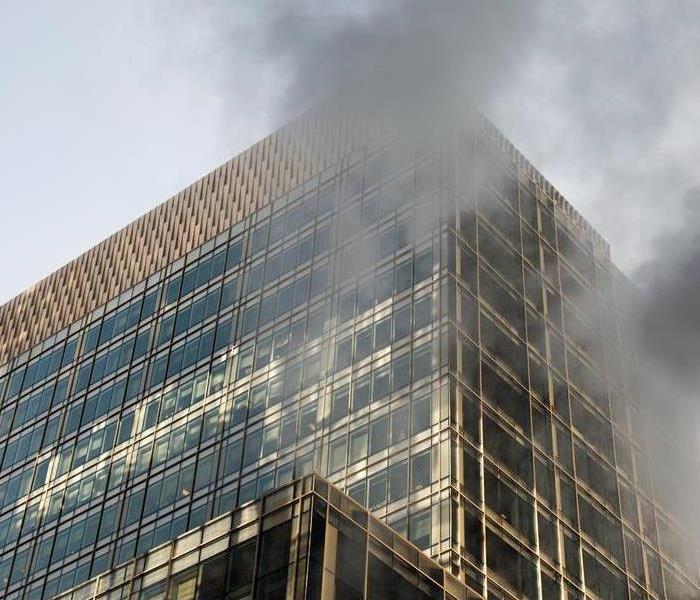 Experience a fire in your workplace can be traumatic.
Experience a fire in your workplace can be traumatic.
Experiencing a fire in your home or business can be a traumatic and devastating event. Once the flames have been extinguished, the process of cleaning and restoring the affected property begins. That’s where SERVPRO of Northern Queens comes in - as a leading fire restoration company, we have the experience, expertise, and equipment needed to effectively clean and restore your property to pre-fire condition.
Step 1: Emergency Contact
The first step in the fire restoration process is to contact SERVPRO of Northern Queens. Our emergency response team is available 24/7, and we understand the urgency of the situation. We will ask for details about the fire and its aftermath, and dispatch our team to your property as quickly as possible.
Step 2: Inspection and Assessment
Once our team arrives on the scene, we will assess the extent of the fire damage. This includes examining the structural damage, assessing the smoke and soot damage, and identifying any potential safety hazards. We will then develop a plan of action for the restoration process.
Step 3: Board-Up and Tarping
If the fire has caused structural damage to your property, we will take steps to secure the area by boarding up windows and doors and tarping the roof to prevent further damage.
Step 4: Water Removal and Drying
If the fire was extinguished with water, our team will use specialized equipment to remove the water and dry the affected areas. This prevents further damage from mold and mildew growth.
Step 5: Smoke and Soot Removal
Smoke and soot can cause extensive damage to your property and can be harmful to your health. Our team uses specialized equipment and techniques to remove the smoke and soot from your property. This includes air scrubbers, thermal foggers, and HEPA vacuums.
Step 6: Cleaning and Sanitizing
Once the smoke and soot have been removed, our team will clean and sanitize the affected areas. We use industrial-strength cleaning solutions to remove any remaining residue and odors.
Step 7: Restoration
The final step in the fire restoration process is to restore your property to its pre-fire condition. This may include repairing structural damage, replacing damaged flooring and walls, and repainting. Our team works quickly and efficiently to get your property back to its pre-fire condition as soon as possible.
Throughout the fire restoration process, our SERVPRO team works closely with your insurance company to ensure that your claim is processed as smoothly as possible. We understand the stress and anxiety that comes with experiencing a fire, and our goal is to make the restoration process as stress-free as possible for you and your family.
In conclusion, experiencing a fire in your home or business can be a traumatic event, but with our help, the restoration process can be much easier. We have the experience, expertise, and equipment needed to effectively clean and restore your property to its pre-fire condition.
How To Prevent Holiday Fires
12/22/2022 (Permalink)
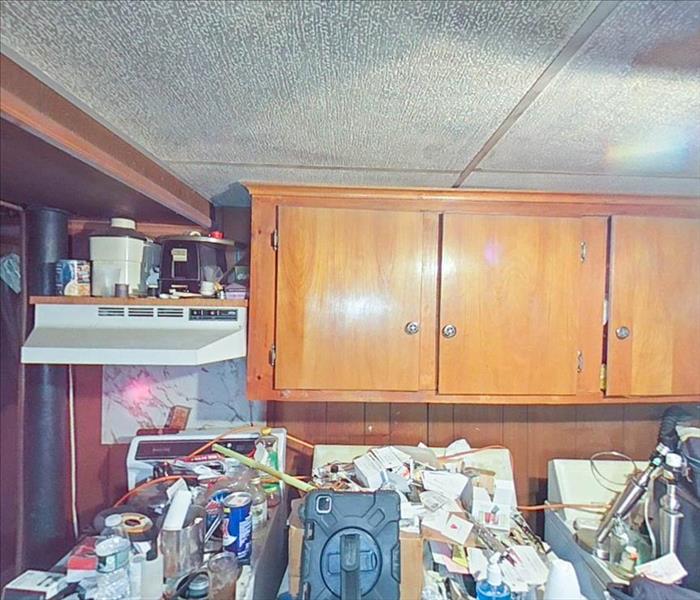 No matter how severe the fire, SERVPRO is here to help!
No matter how severe the fire, SERVPRO is here to help!
Introduction
The holidays are a time for gathering with family and friends, feasting on delicious meals, and celebrating the season. But they're also a time of year when many people accidentally start fires in their homes. According to the National Fire Protection Association (NFPA), holiday fires account for more than 30 percent of all residential fires during December, January, and February each year. Despite this high number, there are ways to prevent holiday fires from happening in your home. Here are some tips:
Never leave cooking food unattended.
Accidents happen, but it's always better to be safe than sorry. The best way to avoid a fire is to never leave cooking food unattended. This means when you're using the stove or oven, be sure that someone else is always paying attention — even if you're just putting something in the oven for a few minutes and then coming back later.
Never use your stove or oven to heat your home as well — it's a good idea not to overfill any electrical appliance with too many items plugged into it at once. If there are too many appliances on at once, this could lead to overheating and potential damage of your appliance or even start a fire!
Use battery-operated flameless candles.
If you’re worried about your family and guests being safe this holiday season, consider replacing real candles with battery-operated flameless candles. Candles are a beloved tradition in many homes—but they can also be dangerous if not handled properly. To keep everyone safe, opt for battery-operated flameless candles instead of their traditional counterparts.
These types of candles come in all shapes and styles, from tapered to pillar to scented varieties that make your home smell like a winter wonderland. They may take longer to set up than traditional ones (you must plug them in), but they’re worth the time investment: they look realistic and have just as nice an effect as their flame-light counterparts!
Install a smoke alarm on every story of your home, and in each bedroom.
In addition to taking these steps, you should also make sure your smoke alarm is functioning properly.
To do this, perform a monthly test by pushing the "test" button on your device. If it sounds an alarm, you should change the batteries immediately and continue testing until the unit is working correctly.
Test your smoke alarms once per month.
Test your smoke alarms once per month and change the batteries at least once per year. This is a pressing safety matter, as many fires are started by faulty or dead smoke alarms. Testing your smoke alarm will help prevent accidents and injuries, while also ensuring that you're well-equipped to detect fire and get out safely should one occur.
If you have pets that might interfere with testing, make sure to test when you are home and awake so that any false alarms can be shut off quickly in case of an actual emergency. If possible, test the alarm when someone else is home who can respond quickly if needed.
Keep combustible materials away from the tree and unplug the tree lights at night or when you leave home.
If you have a live tree, be sure to water it frequently. If possible, place the tree in a bucket with water to keep it from drying out. Keep the base of your tree away from heat sources like fireplaces, radiators, and space heaters. If you have an artificial Christmas tree, make sure it is set up away from flammable items such as curtains or furniture and keep it unplugged when not in use.
Do not overload electrical outlets.
Holiday safety is paramount. In addition to checking the fuses, do not overload electrical outlets.
- Do not plug too many items into one outlet. Plugging in too many appliances or lights into one outlet can cause a short circuit and even start a fire.
- Do not plug extension cords into other extension cords. This causes overcrowding and increases the risk of overheating, which could cause a fire or shock hazard.
- Overloading outlets with too many appliances can also lead to overheating and eventually malfunctioning of the appliance(s). It is best to use multiple power strips instead of multiple outlets if you need extra plugs for various devices such as lamps, televisions, etc., so that each device has its own dedicated power strip with enough capacity for its intended use without causing an overload on any individual circuit breaker in your home's wiring system!"
Never put lit candles on a Christmas tree or near evergreen boughs.
Candles are a great way to add some extra holiday spirit to your home, but they can also cause fires. Never leave lit candles unattended, and never place them near evergreen boughs. Candles can easily ignite the flammable material of garlands and wreaths made from evergreens or other plants with leaves.
If you notice that your house is filling up with smoke from someone else's candle, never enter their house yourself to put out an unattended candle or fire! Instead, call 911 immediately so that the fire department can extinguish the flames before they spread too far and end up destroying your own home as well.
Holiday fires can be prevented through planning and care.
Fire safety is a concern during the holidays, but with planning and care, you can prevent holiday fires.
- Be vigilant with fire safety. Make a plan and stick to it. Check smoke alarms regularly (at least once per month) and test them once per month.
- Know where the fire extinguisher is located in your home - or better yet have one on every floor that you live in and make sure you know how to use it!
Conclusion
In closing, we hope that this guide has helped you to better understand how to prevent holiday fires. It is important to take safety precautions year-round, but especially during the holidays when most people are indoors and more likely to forget about potential risks like candles or cooking fires. If you follow these tips and use common sense when it comes down to it, then you should be able avoid any serious incidents this holiday season!
Fire Damage Restoration
12/22/2022 (Permalink)
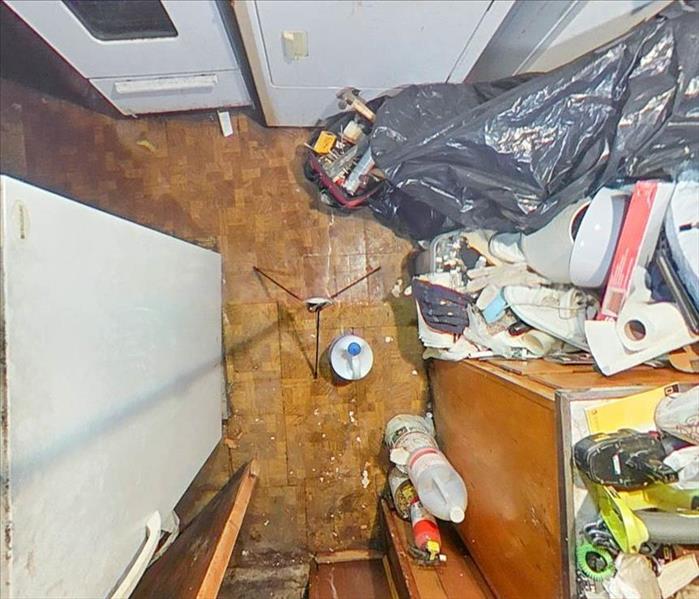 Our teams use expert techniques and top-notch technology to restore any home after a fire!
Our teams use expert techniques and top-notch technology to restore any home after a fire!
Introduction
When a fire strikes, it can be devastating. No one knows this better than those who have experienced a fire. The destruction and damage that are left behind by a small kitchen mishap can rapidly escalate.
When you need professional restoration services after a fire, there’s only one company to call: SERVPRO of Northern Queens. We are the leading provider of fire damage restoration services in the state of New York. With years of experience in the industry, we have helped thousands of homeowners recover from disaster and prepare their homes for resale or sale on short notice. Our team is trained to handle all types of fires including electrical fires, natural gas leaks and any other type.
Fire Damage Restoration
Fire damage restoration is important because it allows you to get back to your normal life as quickly as possible. The longer you wait, the longer it will take for your home or business to be fully restored.
Fire damage restoration can be done in a variety of ways depending on the type and extent of fire damage. Some common methods include:
- Deodorizing
- Structural repair
- Inspection/testing
Emergency Fire Damage
- Call us 24/7 – Our fire damage restoration professionals are here for you, no matter what time of day or night you need help.
- Fast response time – We know that when a family is displaced from their home due to a fire, they want to get back into their home as soon as possible. That’s why we respond to your call for service quickly and get the job done right away.
- Experienced crews – Our staff has been trained extensively in all areas relating to fire damage restoration services. They are equipped with the latest tools and techniques needed to do their jobs efficiently, so they can get your home back in tip-top condition as soon as possible!
- Professional service – Our goal is always 100% customer satisfaction.
Smoke & Soot Cleanup
Soot is a byproduct of the combustion process. It's a dark, fine powder that can contain toxic chemicals that can cause respiratory problems if inhaled and skin irritation if it encounters the skin.
Pack-Out Service
If your home or business has suffered damage from a fire and you’re thinking about hiring a restoration company, consider this: After your home or business has been cleaned up and restored, many of the items that were not damaged will need to be packed up and moved out by a professional.
The reasons why this is important are many. First, it’s best practice for safety reasons — if something isn’t properly packed up after cleaning, mold could grow on the surface of an item that was exposed to smoke damage during the cleaning process. Second, packing items can help speed up insurance claims because it allows you to submit photos showing all your property before beginning repairs. Thirdly (and most importantly), having professionals pack-out both parts of your claim helps ensure everything is documented correctly so as not to lose any coverage due to lack of evidence for what was damaged or lost during the incident itself or through subsequent activities surrounding repairs/cleanup efforts.
If there are any questions about whether or not an item needs packing services before being moved out by professionals after being cleaned up following fire damage at home or work, then please contact us today!
Content Cleaning & Restoration
After fire damage, there is often a large amount of residual soot and smoke inside the building. This soot can cause permanent damage to furniture, carpeting, drapes, and other household items if it is not removed quickly. This type of content cleaning is also known as “de-soiling” or “home restoration”. The goal of content cleaning after a fire is to restore your home or business back to its original condition for you to return safely and comfortably.
Odor Removal & Deodorization
Odor removal is a process that aims to eliminate malodors in the air. Odors can be caused by several things, such as fire damage and smoke damage. Smoke contains volatile organic compounds (VOCs), which are chemicals emitted into the air by burning products like furniture or carpeting. Once these VOCs are released into the air, they begin to settle onto items like walls, ceilings, and floors throughout your home—and they stick around for quite some time!
To remove odors from your home after it’s been damaged by fire or smoke, you need effective odor removal services that use specialized equipment to clean away smoke particles from every surface of your property. Deodorization is another type of odor removal service provided by professionals at our company; however, deodorization uses heat instead of chemicals for odor reduction purposes.
Back to Pre-Loss Condition
If you own a home business, the fire damage restoration process is likely to be more complicated than if you have a regular residence.
While your primary concern is to make sure your family and pets are safe, there are other concerns that can arise from a fire in your home. For example, if your business was damaged in the fire, then there may be damage to equipment or inventory as well as lost income due to disruption of normal operations. The first thing you'll want is for an insurance specialist on site who can quickly assess these types of damages and begin documenting them so that an adjuster can determine what's covered by insurance policies and what isn't—and how much it will cost for the repairs or replacement items.
Conclusion
If you have fire damage and need help, Contact our team today at 718-971-1585. Our operators are available 24 hours a day, 7 days a week to answer any questions or concerns you may have.
What Can be Salvaged after a House Fire?
12/13/2022 (Permalink)
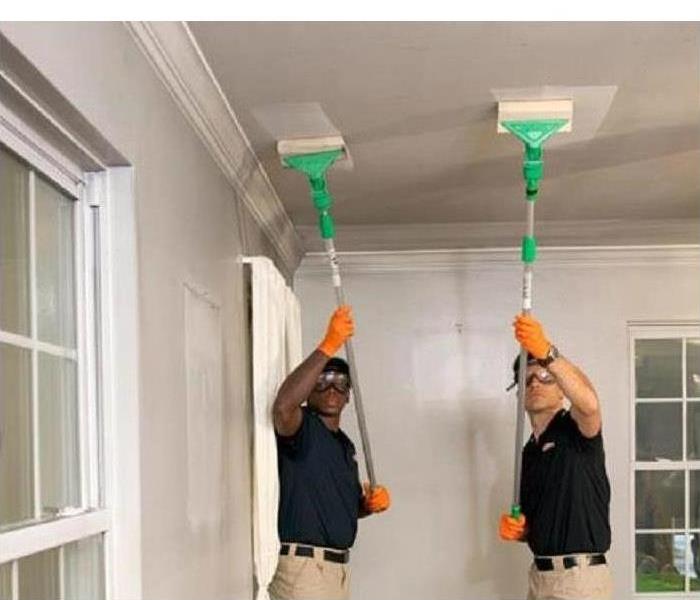 Soot cleanup
Soot cleanup
What Happens When a House Catches on Fire
When a house fire occurs, it can be devastating. Fortunately, there are some things that you can do to make yourself feel better about the situation and protect your finances in the process. Before we get into how to salvage what's left of your home after a fire—and how not to get scammed by those who claim they know how—let's talk about what happens when a house catches on fire.
What cannot be salvaged after a house fire?
Food, dishes and utensils: The smoke from a fire will leave an odor on your food. This can be cleaned, but only through extensive cleaning. If you have cooked meat in the refrigerator that has been exposed to smoke for long periods of time, it may not be safe to eat.
Electronics and appliances: Any electronic items that have been exposed to high temperatures for extended periods of time will probably not function again. This includes televisions, computers and other computer equipment such as printers/scanners/fax machines or monitors; telephones; stereo equipment including speakers; microwave ovens etcetera. Anything with circuit boards needs professional evaluation by an expert before attempting any repairs because they may contain toxic materials which could cause further damage should they be handled improperly at this point in time!
Furniture: Furniture made from natural fibers such as cotton is usually damaged beyond repair when exposed directly over long periods of time with no protection from heat sources such as burning embers falling on them directly.
What can be salvaged after a house fire?
Fire damage is not always the end of a home. If you act fast and clean up with care, you can save some of your belongings if you act fast.
If your home has been damaged by fire, take the following steps:
- Take photos of any items that were damaged by smoke or water from firefighting efforts. This will help with insurance claims later.
- Remove any materials that have melted or burned onto other items (like pots on stoves). Don’t try to remove them yourself; call in professionals for this type of work. The damage may be worse than it looks at first glance!
Types of damage after a fire
Fire damage can be extremely difficult to repair, and a house fire can leave you with a lot of valuable items that cannot be salvaged. The following is a list of the most common types of damage after a fire:
- Fire damage to walls and ceilings
- Fire damage to floors
- Fire damage to furniture
- Fire damage to carpets
- Fire damage to clothing, textiles, and upholstery
Fire damage to wood
Wood can be salvaged if it is not burned, water damaged, moldy and/or rotted. However, if the wood has sustained heat damage from the fire it may be necessary to replace a section of the framing. This is because once heat penetrates wood, it changes the grain structure of the wood and makes it more brittle. While you can use this information to help determine whether you should salvage your floorboards after a house fire - there are just too many variables to say with certainty what will happen when you attempt to remove them.
Wood floors are often installed over joists that have been nailed directly into walls rather than supported by beams, which means they're attached only at each end and run unsupported down the middle of rooms like hallways or bedrooms where they're likely exposed more frequently so they're more likely affected by moisture from such things as leaks from plumbing pipes or HVAC systems (heating/cooling).
Fire damage to metal
- Cleaning metal is a relatively simple process.
- Soap, water, and steel wool are all that’s needed to clean up smoke damage on your copper pipes, brass fixtures and other metal pieces.
- To remove the soot from these items, soak them in soapy water for an hour or two before scrubbing them with steel wool. The more stubborn the stain is, you may need to repeat this process several times before it comes off completely.
Fire damage to carpet and flooring
If the fire was contained to a single room, your carpet and flooring can be salvaged. This is especially true of hardwood floors, which are very durable and resistant to fire damage. If you have tile or vinyl flooring, it may not survive as well; however, this can also depend on how long the flames were burning before they were extinguished.
If you suspect any kind of damage to your flooring in general or just want peace of mind that everything is fine, we recommend hiring a professional cleaning crew who specializes in fire restoration after fires have occurred.
Fire-damaged clothing, textiles, and upholstery
Clothing, textiles, and upholstery can be salvaged from a house fire. If you have time before the fire department arrives, remove these items from the home yourself.
Fire-damaged clothing is best cleaned as soon as possible to prevent the spread of smoke odors into other areas of your home. Clothing can be cleaned by hand with detergent and water or machine-washed in cold water on a gentle cycle with mild detergent. Dry at low temperatures on a low setting to avoid excessive shrinking or wrinkling. Use fabric softener if desired to soften clothes that were previously dried on high heat settings like dryers; this will help minimize any stiffness caused by overheating during some laundering methods such as drying clothes in direct sunlight or ironing them while still damp after laundering.
Call a professional
When you're faced with a fire, one of the first things to do is call 911. If that's not possible, get out of the house and call from a neighbor's phone. The fire department will tell you whether it's safe for you to return or whether it might be better for someone else to help salvage what they can.
If possible, it's best to call professional cleaners before attempting any cleanup yourself (but if an insurance adjuster has already been called, there may not be much point in doing so). If not, here are some tips:
- Don't use water or other cleaning methods on anything that was exposed to heat—it could make things worse! A vacuum cleaner should also be avoided; instead wrap any objects in towels or paper bags before carrying them outside. If an object is too big for this method, turn off all power sources (like electricity) before trying to move anything large out of the house; if something isn’t plugged in but has electronic elements like batteries or solar panels attached, remove those first!
If you’re dealing with fire damage, don’t wait to call a professional. A house fire can cause significant damage to your home and belongings. If you notice signs of smoke or soot in your property, it’s crucial that you contact an experienced company who knows what they are doing.


 24/7 Emergency Service
24/7 Emergency Service





